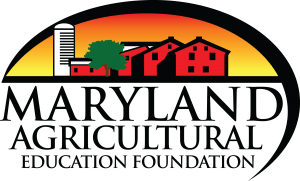This module is for Grades: 6-8 Welcome!

A watermelon patch
Objective
Explain that humans can influence traits of organisms.
Did you know that watermelons are one of the only foods classified as both a fruit and a vegetable? It’s true! Watermelons are in the same gourd family as squash, melons, pumpkins, and cucumbers. A crop native to northeastern Africa, watermelons have been widely grown in India, China, and Europe for hundreds, and sometimes thousands, of years. They were first introduced to the Americas from enslaved Africans. Watermelons don’t tolerate cold temperatures; rather, they grow in warm, tropical temperatures.
Similar to South Africa’s climate, in Maryland, watermelons are planted between mid-May and mid-June and are harvested from July through late September. And while some people don't eat all of the watermelon, it can be eaten completely – including the rind and seeds. Watermelons are 92% water and 8% sugar, and contain vitamin C, potassium, and magnesium. They are grown in seeded and seedless varieties.
Today you are going to learn more about melon farming at Foxleigh Farm in Carroll County, Md. Discover the science behind the creation of seedless watermelons.








